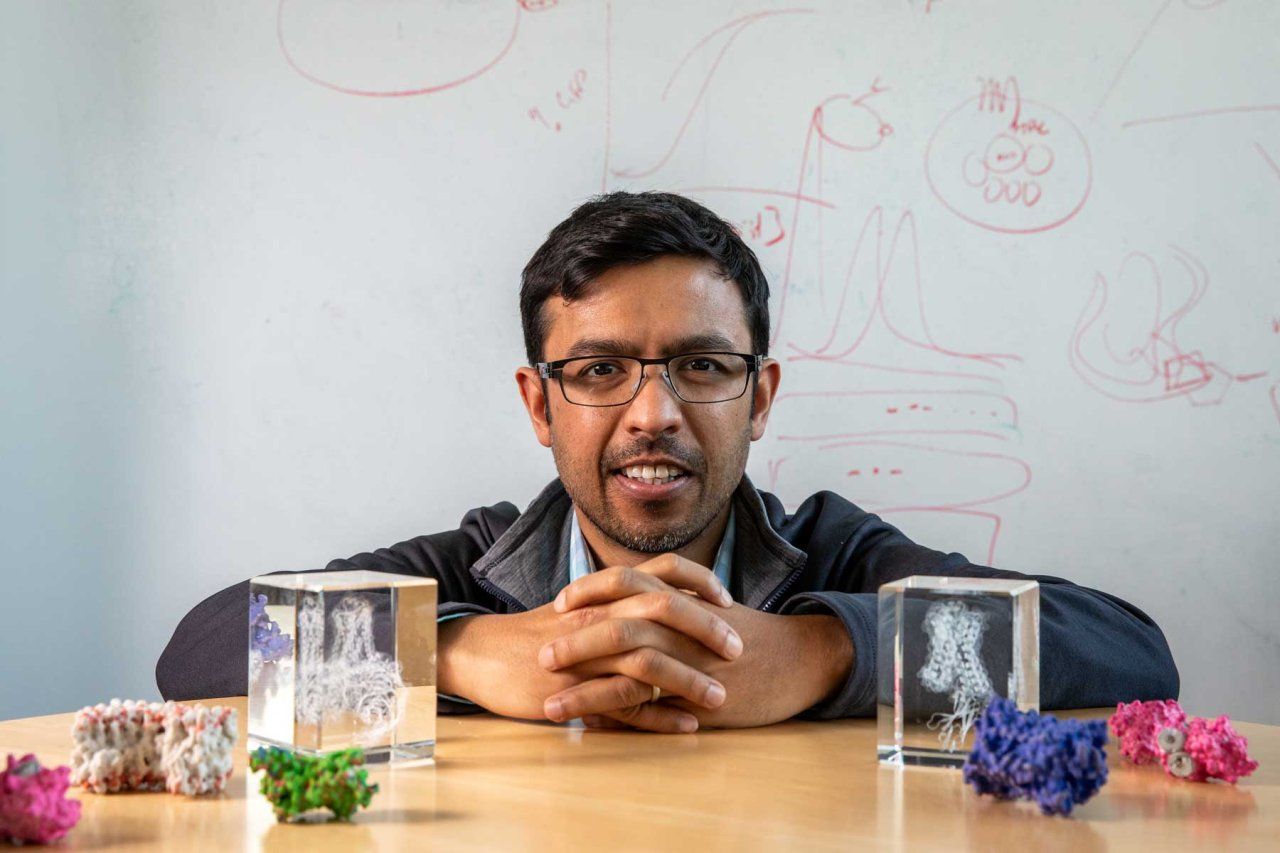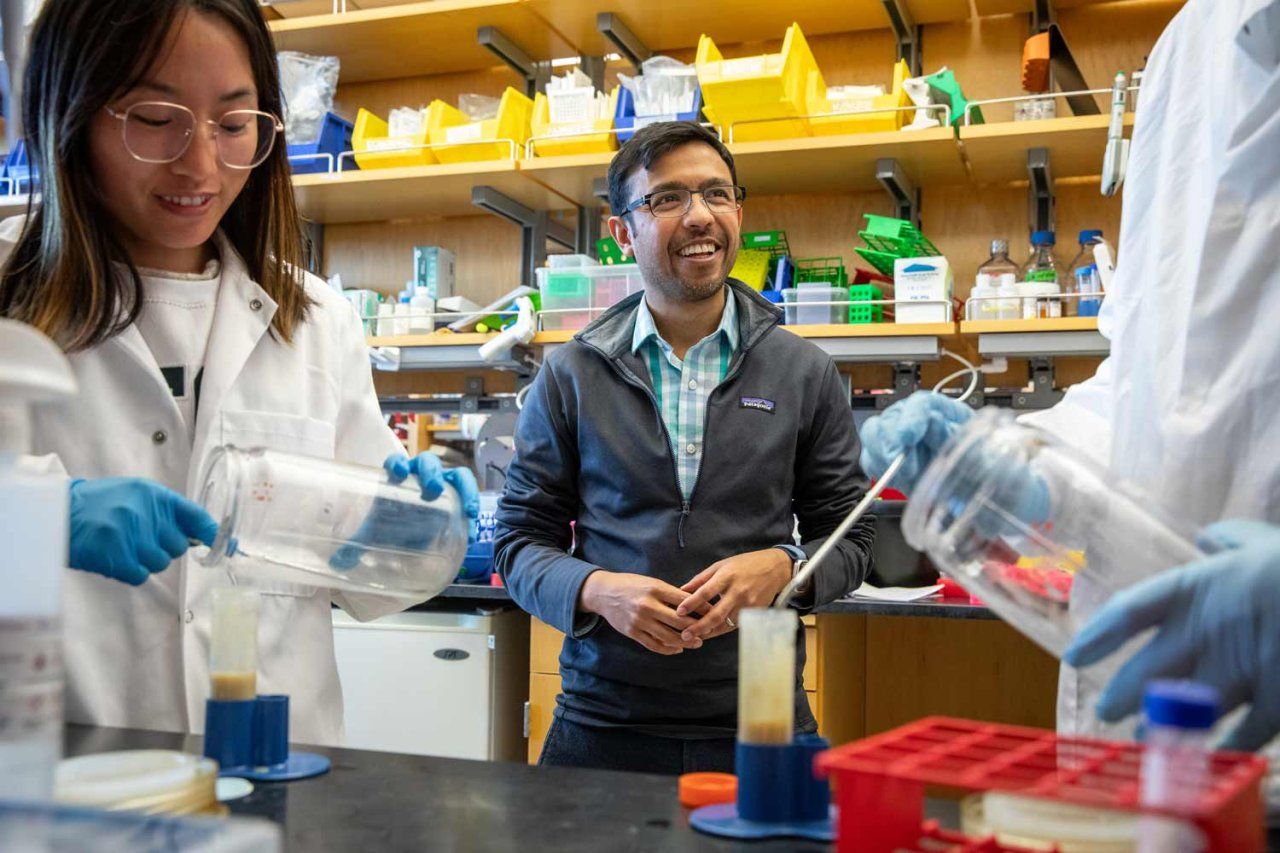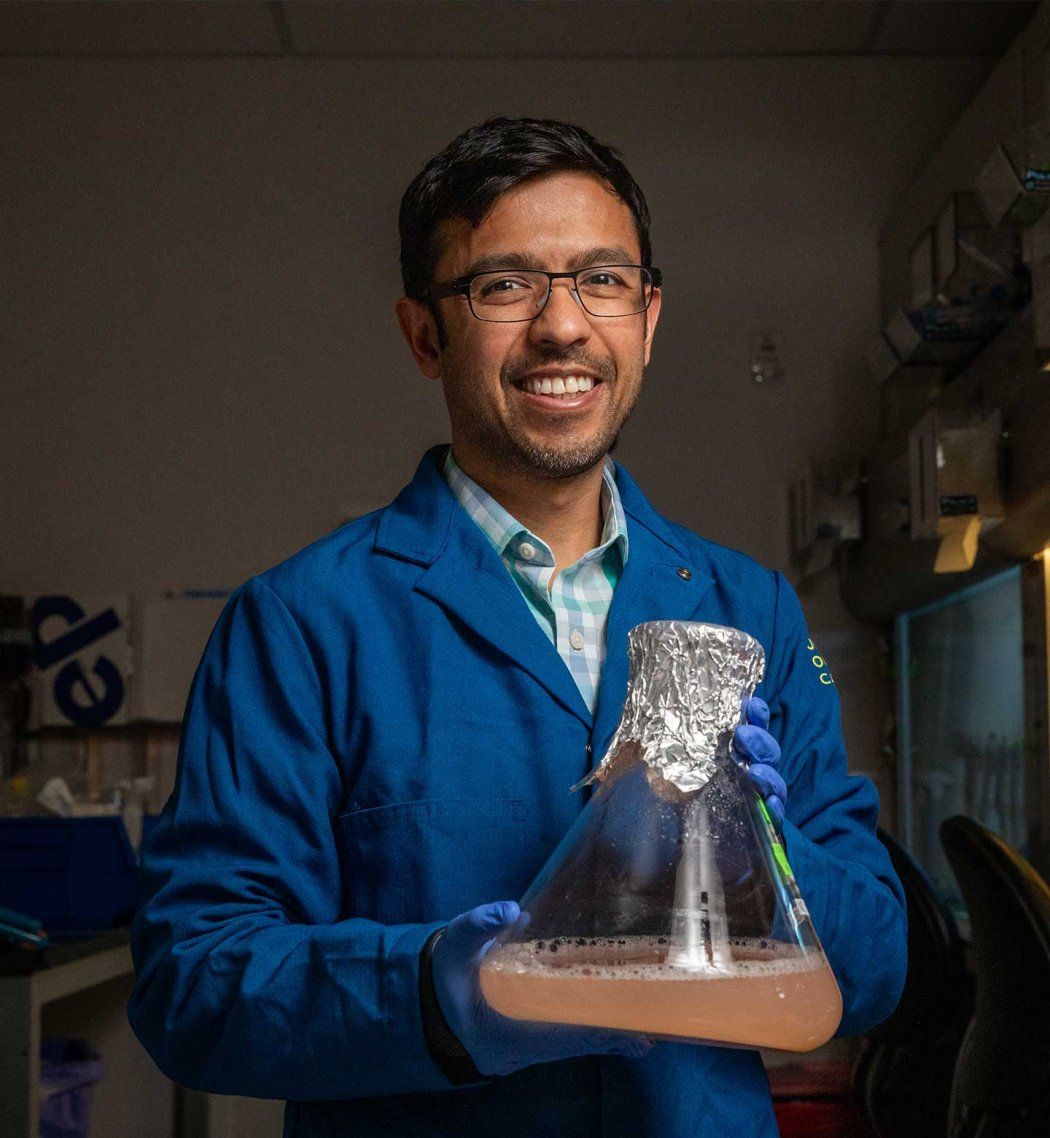The newly awarded 2024 Bowes Biomedical Investigator, Aashish Manglik, MD, PhD, began his career determined to work as a physician and a scientist before realizing that he found pondering the origin of a disease more fascinating than actually treating it.
“I loved seeing patients, but at the end of the day, thinking about the very technical problems behind the illnesses gave me true sustenance,” says the biophysicist, who comes from a family of doctors, including his father. “I realized the medical world would be better served if I worked in the lab and thought about upstream ways of solving problems.”
And he notes, following a disease “upstream” often leads to diagnostic revelations. “My career is filled with interesting observations in different domains where we try to understand a fundamental principle of how something works.”
Now Manglik, a UCSF associate professor in the Department of Pharmaceutical Chemistry, is considering his next move, made possible by the William K. Bowes Jr. Foundation, which established the award that provides selected scientists with $1.25 million over five years to further their research.
UCSF is a wonderful place to set up your own shop and get both support and meaningful critique from others.”
Since 2010, Manglik has focused on cell signaling – how cells sense and respond to the world around them. Last year, he and his team celebrated a breakthrough when they discovered how smell molecules bind to olfactory receptors to produce the odor of Swiss cheese. Their findings, published in Nature in March 2023, advanced understanding of G-protein-coupled receptors (GPCRs), a category of membrane proteins critical to cell communication.
Long fascinated by these highly versatile receptors, Manglik began studying GPCRs at Stanford University, where he earned his medical degree and doctorate in biophysics, in the lab of physiologist Brian Kobilka, MD, winner of the 2012 Nobel Prize in Chemistry for pioneering GPCR research.
“Since then,” Manglik notes, “there’s been a big drive to understand how this entire family of GPCRs works.”
It’s easy to understand why. At roughly 800 of the 20,000 genes in the human genome, GPCRs are the single largest family of genes, responsible for a myriad of biological processes ranging from vision, smell, and taste to cellular responses to hormones and neurotransmitters. Plus, 30 percent of drugs approved by the US Food and Drug Administration (FDA) target a GPCR – including beta blockers, antipsychotics, and glucagon-like peptide-1 (GLP-1) receptor agonists such as the drugs prescribed to treat type 2 diabetes and obesity, Ozempic and Wegovy.
“GPCRs allow our cells to talk to one another,” observes the scientist. “If we understood that process better, we could manipulate human physiology for various diseases. The question that interests me is, what is the fundamental way these receptors signal? Understanding that is the key driver. If you understand that, you can imagine creating new medications.”

Before joining UCSF in 2016, Manglik got a sense of the place when he co-authored a collaborative paper with the lab of Brian Shoichet, PhD, a UCSF professor of pharmaceutical chemistry. Published in Nature, their findings detailed the discovery of a molecule that activates opioid receptors – also GPCRs – without causing the side effects typical of most opioid medications. The two started a company to explore their options – a collaboration that introduced him to the unique culture and academic community at UCSF.
“UCSF is a wonderful place to set up your own shop and get both support and meaningful critique from others,” says Manglik, who holds a joint appointment in the School of Medicine’s Department of Anesthesia and Perioperative Care. “That intellectual gift of using your extra brain cells for a few minutes on someone else’s science is really rare because it is taxing, and it takes effort. But at UCSF, it’s the cultural norm. It’s what we do.”
His colleague Joseph Bondy-Denomy, PhD, agreed. “Aashish is a big thinker and a technical mastermind,” says Bondy-Denomy, a UCSF microbiologist and the 2022 Bowes Biomedical Investigator. “He is also a kind colleague who loves to talk about all kinds of science and can always provide ideas and questions. Listening to stories from his lab about the molecular and structural mechanisms of sensory processes always blows me away.”
UCSF launched the Bowes Biomedical Investigator Program in 2016 with a $50 million gift from the late William K. “Bill” Bowes Jr., a venture capitalist who gave almost $100 million to the university during his lifetime. The program supports basic scientists who have the potential to make significant contributions to biomedicine – but who often follow unconventional paths making their work difficult to fund through traditional means like grants from the National Institutes of Health.
Manglik is the sixth investigator named to the Bowes program, which awards winning scientists $250,000 a year for five years. Besides Bondy-Denomy, previous award recipients include:
- Edward Chang, MD ’04, the Jeanne Robertson Distinguished Professor of Psychiatry (2018).
- James Fraser, PhD, the Ernest L. Prien Professor in the Department of Bioengineering and Therapeutic Sciences (2019).
- Danica Fujimori, PhD, Stuart Lindsay Professor of Experimental Pathology in the Department of Cellular and Molecular Pharmacology (2020).
- Shaeri Mukherjee, PhD, professor in the Department of Microbiology and Immunology (2023).
Fraser called Manglik a wonderful teacher who spends time ensuring his students meet his high standards and an amazing scientist. “When he told me about his odorant receptor structure, I was blown away – the sense of smell, structurally resolved, for the first time,” Fraser marveled.
Manglik is thrilled to receive the Bowes award because it offers him the means to explore new territory – “pivot hard,” as he puts it. One direction he has long found fascinating has been the intersection of his GPCR research and neuropsychiatric diseases.
“My naïve view is that some of the most transformative neuropsychiatric drugs have targeted a GPCR,” he says. “And here’s the crazy thing, there are dozens of GPCRs in the brain for which nobody has ever discovered a small chemical molecule that can turn this receptor on or off. We know these receptors have profound effects on behavior, but it has just been very challenging to find a small-molecule drug for a lot of these receptors.”
Manglik sees opportunity, a huge opportunity. “Again, it would require a big pivot from what my lab currently works on. But if you’re creative and you think about problems from a very fundamental level, there are many things in human biology that are just so poorly understood from a mechanistic level.
“That’s what I find very exciting.”

